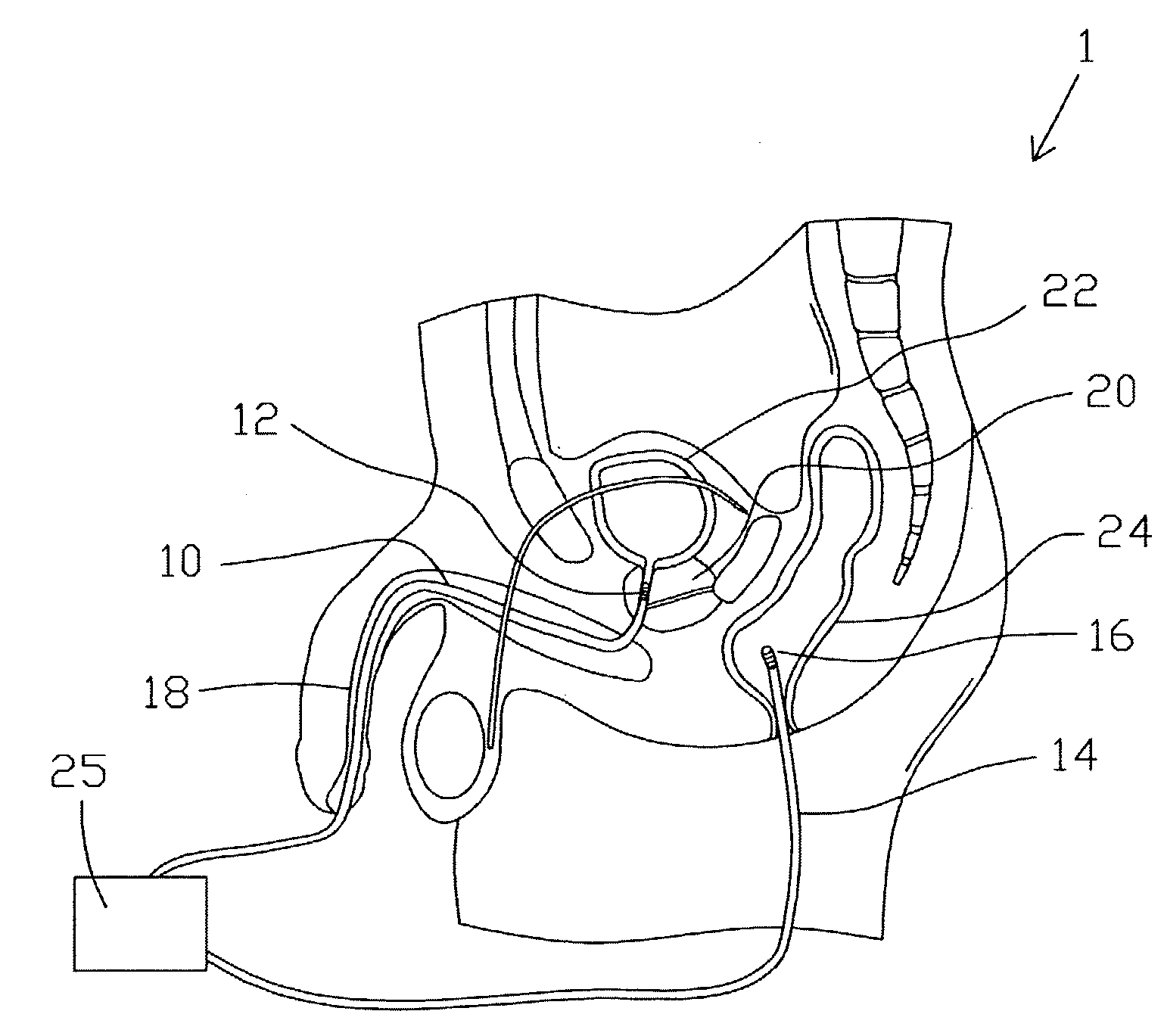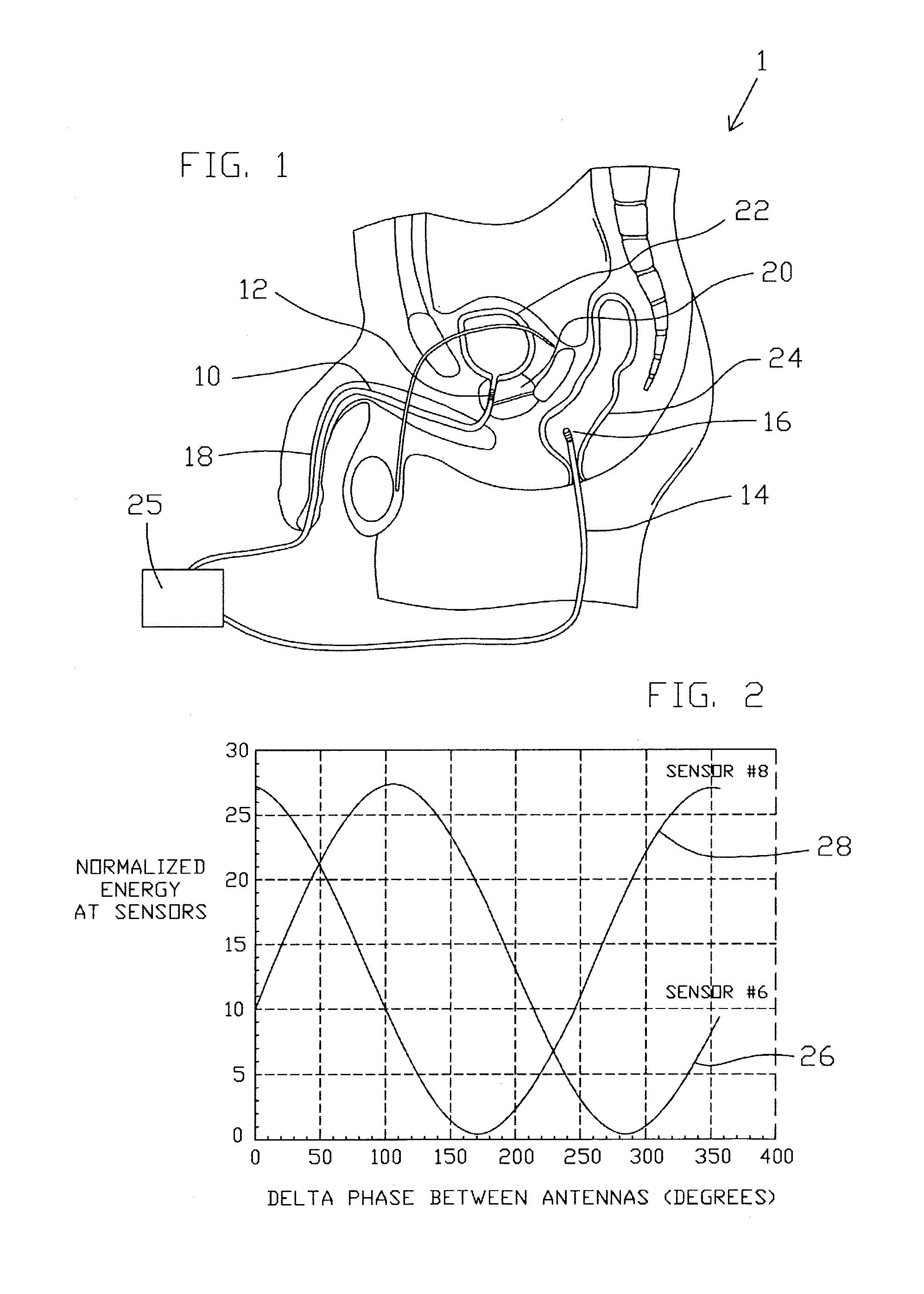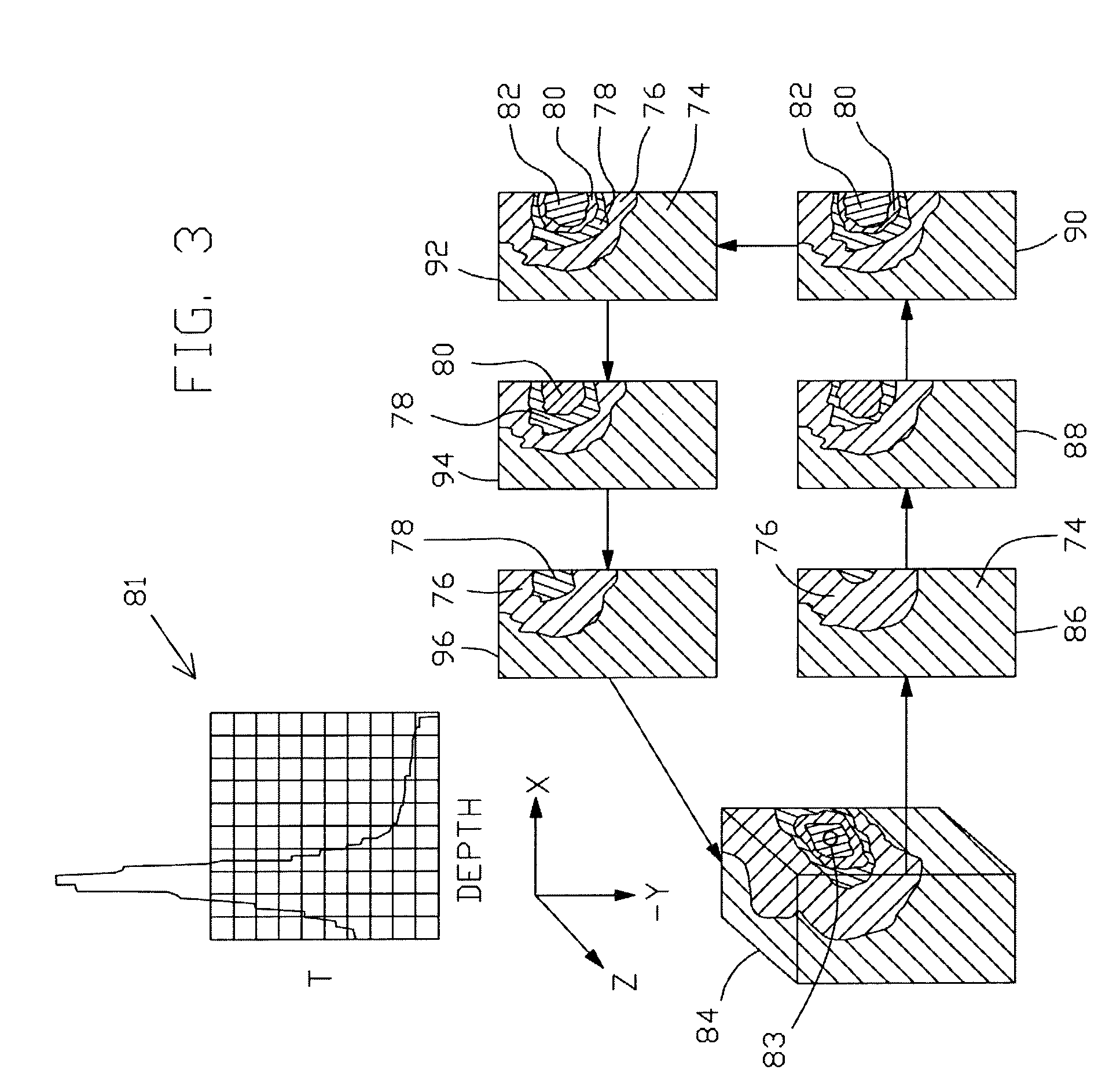Microwave medical treatment apparatus and method
a technology of microwave and medical equipment, applied in the field of microwave medical equipment and methods, can solve the problems of preventing damage to healthy tissue, obstructing the urinary tract, and surgical procedures for treating bph that are available but have potential side effects, so as to prevent damage to healthy tissue and quick
- Summary
- Abstract
- Description
- Claims
- Application Information
AI Technical Summary
Benefits of technology
Problems solved by technology
Method used
Image
Examples
example 1
[0066]FIG. 2 shows computer projected results and / or laboratory testing results for a configuration whereby urethra antenna 12 and colon antenna 16 are separated by 3.8 centimeters and operating at 1.5 GHz. Numerous sensors may be utilized for laboratory testing and / or computer projections. In Example 1, sensor # 6 is located 20.5 mm from urethra antenna 12 and 14.5 mm from colon antenna 16. Sensor #8 is 23.5 mm from urethra antenna 12 and 11.5 mm from colon antenna 16. The spacing between sensors 6 and 8 is 3 mm. As can be seen in the data recorded in FIG. 2, the heating energy at each of the two sensor locations can vary from a maximum (the radiated energies from each antenna constructively add together in-phase) to a minimum (the radiated energies from each antenna destructively subtract from each other when 180 degrees out of phase) by simply adjusting the relative phase between antennas 12 and 16. The temperature variation at sensor 6 in response to changes in the phase differe...
example 2
[0069]As an example of operation, and referring first to FIG. 1, antenna 12 in the urethra, and antenna 16 in the colon, are spaced apart by one wavelength, i.e., the frequency of the microwave power is adjusted such that the distance between urethra antenna 12 and colon antenna 16 is equal to one wavelength of the microwave signal to be transmitted by both antennas. One of the antennas is fed 180 degrees out of phase with the other. The frequency of operation is 2.5 gigahertz. As shown in FIG. 7, graph 30 shows the temperature variation versus distance between the two antennas. Urethra antenna 12 is referenced generally at position 34 as indicated in graph 30 and colon antenna 16 is referenced generally at position 36 in graph 30. In graph 30, a fairly uniform 22 degrees Centigrade temperature rise is produced in heated region 32, which is about 2 mm wide. This raised temperature is sufficient for ablating tissue and can be achieved between the two antennas without significant coll...
example 3
[0076]The basic advantages of multiple antennas over one antenna can be seen in comparing the results discussed in Examples 1 and 2 with the heating profile shown in FIG. 3. Because there is no cooling of the antenna, the maximum temperature increase is produced around the antenna as indicated at 83 in cube 84. As per graph 81, one antenna radiates with the maximum heat generated near the antenna. The heat falls off with the depth into the tissue. This also increases the cooling problem. Note that no cooling is applied to the antenna. By using suitable cooling and other means as taught in the parent cases to this application even with only one antenna, the tissues such as the urethra and / or colon tissues could be protected in the region surrounding the antenna to provide a useful heating profile for ablating some tissue and protecting tissue surrounding the antenna. As indicated in temperature versus depth graph 81, the maximum temperature increase is 34 degrees Centigrade. The shad...
PUM
 Login to View More
Login to View More Abstract
Description
Claims
Application Information
 Login to View More
Login to View More - R&D
- Intellectual Property
- Life Sciences
- Materials
- Tech Scout
- Unparalleled Data Quality
- Higher Quality Content
- 60% Fewer Hallucinations
Browse by: Latest US Patents, China's latest patents, Technical Efficacy Thesaurus, Application Domain, Technology Topic, Popular Technical Reports.
© 2025 PatSnap. All rights reserved.Legal|Privacy policy|Modern Slavery Act Transparency Statement|Sitemap|About US| Contact US: help@patsnap.com



